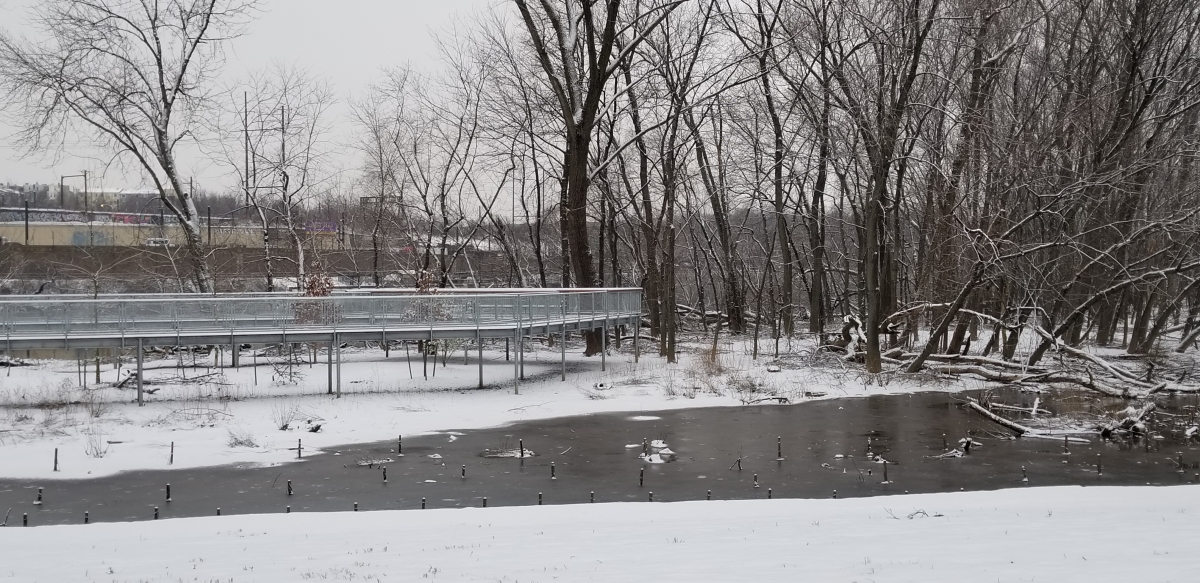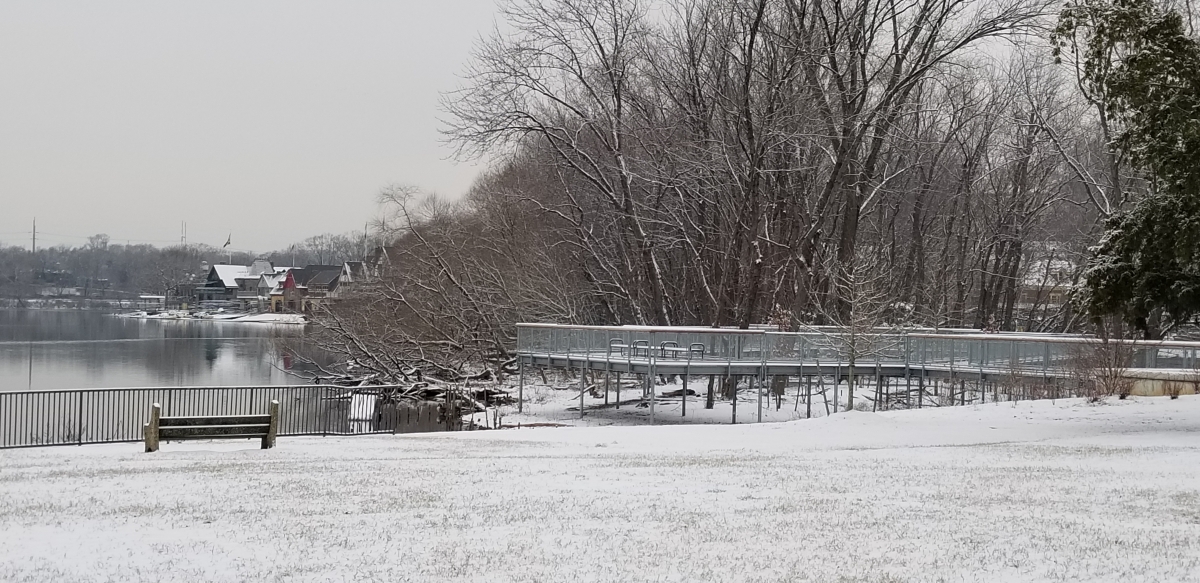Related Posts:
- Buy Tickets for The Constitutional Walking Tour of Philadelphia – See 20+ Sites on a Primary Overview of Independence Park, including the Liberty Bell and Independence Hall
- Schuylkill River Trail & Schuylkill Banks - Our blog on the Schuylkill River Trail and Banks
- The Grace Kelly Home - Click here to learn more about the Kelly's mentioned below
- Boathouse Row - Our blog on the nearby Boathouse Row
- Laurel Hill Cemetery - Our blog on the nearby Laurel Hill Cemetery
The Fairmount Water Works is a historic technological marvel on the banks of the Schuylkill River. The newly completed section of the Schuylkill River Trail, known as "Fairmount Water Works Trail and Boardwalk" has outstounding views of this beautiful structure. Read on to learn more about the history of this landmark of public works and what to do at the Fairmount Water Works today!
The Creation of the Fairmount Water Works
Looking at the Fairmount Water Works today, its beauty is readily apparent. But what is less obvious from the outside, is that the Fairmount Water Works was once an incredible technological achievement. The issue of how to transport clean water throughout a city as large as Philly is a problem that has challenged cities throughout the history of civilization and at the time of its creation, the Fairmount Water Works solved that problem arguably better than any entity that came before it.
Philadelphia had a lot of motivation to create such an advanced water system. By the year 1800, Philadelphia was still the largest urban area in America and its massive population rivaled that of many of the largest cities in Europe. But whereas those European cities had grown over many centuries, at that point Philadelphia was barely 100 years old and had grown so fast that it was in many ways unequipped to handle its size.
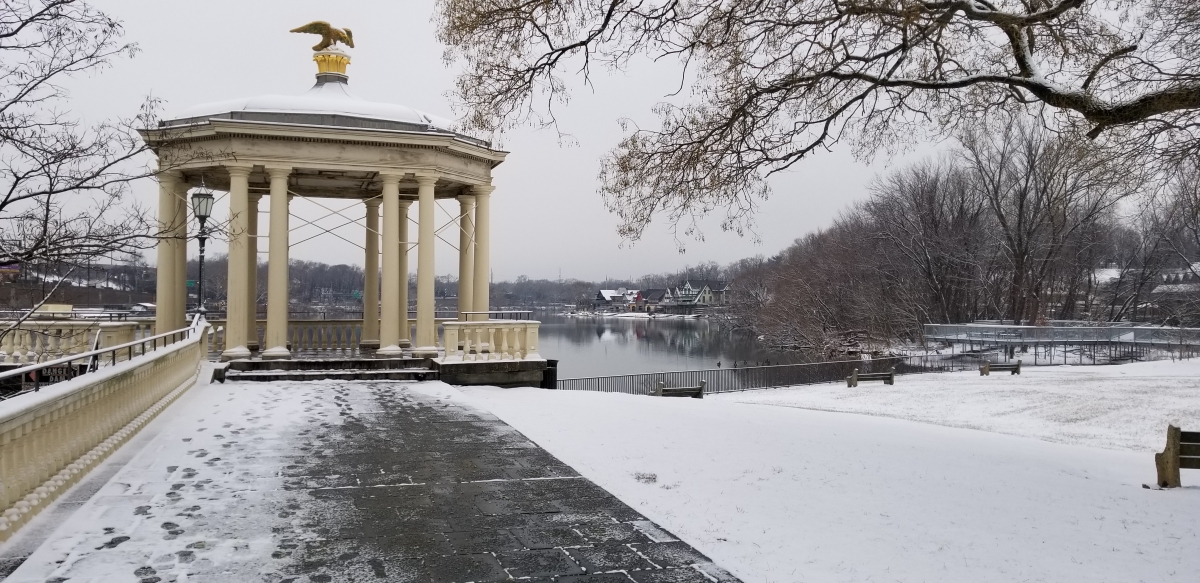
The issue of handling waste and providing clean water to its 60,000+ citizens was among Philadelphia’s greatest challenges. Numerous disease outbreaks, including a string of incredibly deadly Yellow Fever outbreaks had claimed the lives of tens of thousands between 1790 and 1800, and Philadelphia’s leaders decided a dramatic change was necessary. A group named the “Watering Committee” began meeting to solve the issue and began devising a plan to pump fresh water from the Schuylkill River throughout Philadelphia. The committee was originally headed by Benjamin Latrobe, who also designed the Capital Building in Washington, D.C.
A site was chosen along the Eastern bank of the Schuylkill River that was elevated above the most populated parts of Philadelphia, and they began to build Latrobe’s system in 1799. But plagued by supply issues, Philadelphia quickly moved to create a larger, more elaborate system that became known as the Fairmount Water Works in 1812. The system at Fairmount Water Works utilized then state of the art steam engines, wooden tanks, and wooden water mains to pump clean water into a large reservoir at the top of nearby Fairmount, once a tall hill that was the highest point in the original City limits of Philadelphia. From the reservoir, gravity would carry the water through wooden water mains throughout Philadelphia. Despite the industrial machinery that operated inside the Fairmount Water Works, on the outside is a picturesque Classical Revival exterior that sits on the banks of the Schuylkill River, becoming part of one of Philadelphia’s most beautiful and enduring views.
A Technological Marvel
When it opened 1815, the Fairmount Water Works was an incredible feat of engineering, and it was one of the most advanced public water systems in the world. The system was the first public water supply in America. A public water system is so incredibly taken for granted today, but it was a marvelous futuristic system in the early 19th Century and even became a global touristic attraction. Among the visitors included Mark Twain and Charles Dickens. After his 1842 visit, Dickens had the following to say about the Fairmount Water Works:
“Philadelphia is most bountifully provided with fresh water, which is showered and jerked about and turned on and poured off everywhere. The Water-Works, which are on a height near the city, are no less ornamental than useful, being tastefully laid out as a public garden, and kept in the best and neatest order”
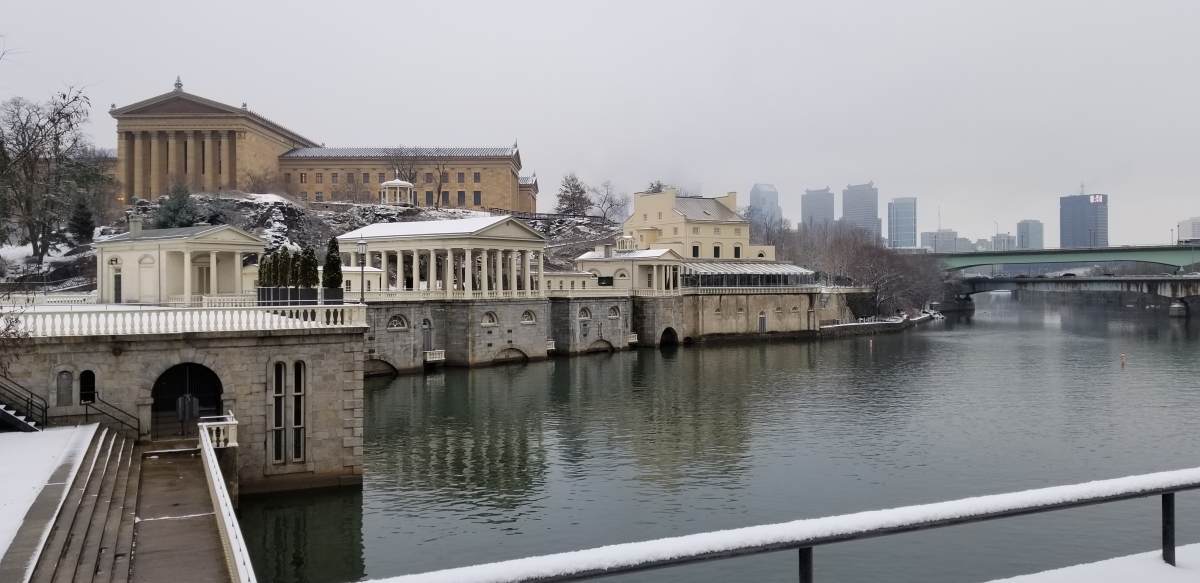
Nearly a Century of Use
As Philadelphia continued to grow, a constant improvement of the Fairmount Water Works was necessary to serve Philadelphians. Additional pump houses were added and newer, larger steam engines replaced older less efficient engines.
One of the most significant improvements was the creation of the Fairmount Dam in 1822. The diagonal dam cut across the Schuylkill River and pushed the flow of the water toward the Fairmount Water Works. The dam improved efficiency and prevented sea water from the Atlantic Ocean from flowing back up the Schuylkill and contaminating the drinking water as the Schuylkill is a tidal river. The side effect of the Fairmount Dam is that above the dam the width of the Schuylkill was greatly increased and became far more tranquil, transforming it into the perfect place for recreation, including rowing. This led to construction of Boathouse Row directly upstream from the Fairmount Water Works, another of Philadelphia’s most beautiful and iconic views.
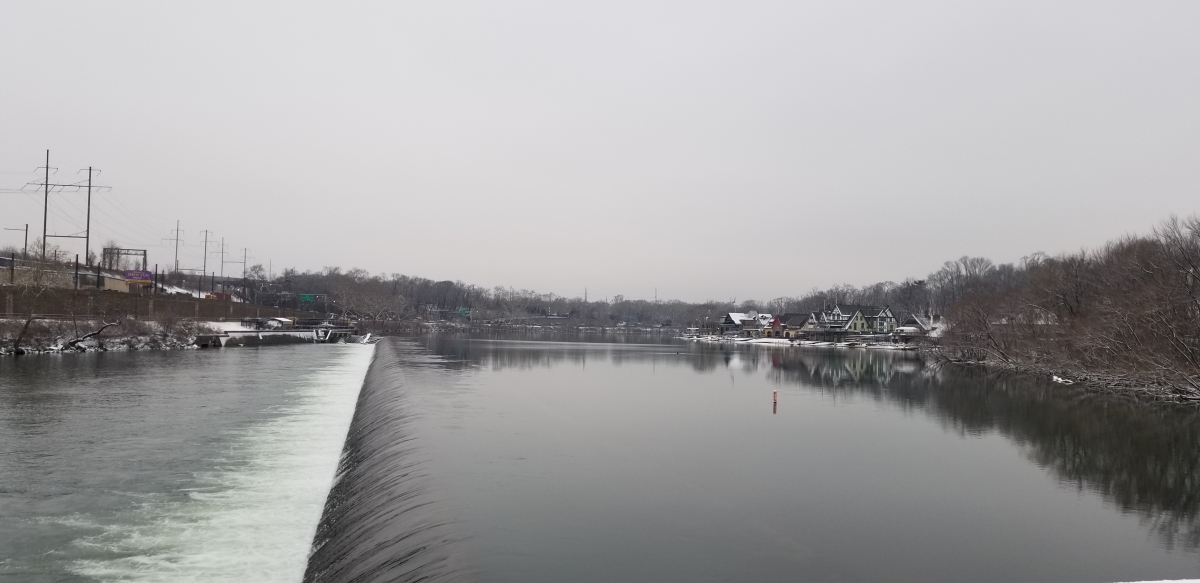
Eventually though the Fairmount Water Works would become obsolete and was closed in 1909 as it was replaced by more modern systems. The reservoir on top of Fairmount hill would be drained and would be replaced by the Philadelphia Museum of Art and much of the machinery inside the Fairmount Water Works would be removed to be repurposed or sold for scrap. But the building that housed the Fairmount Water Works would prove to be too beautiful to tear down and the Water Works would go on to serve numerous other purposes in the century that followed.
The Philadelphia Aquarium
A couple of years after closing, the Fairmount Water Works reopened as the Philadelphia Aquarium in 1911. Aquariums were still largely without precedent at this point and not very common. The initial investment from the city to create the Philadelphia Aquarium was just $1,500. The aquarium featured seals, sea lions and large tanks for both fresh and salt water fish and reptile species. Within 20 years it was one of the four largest Aquariums in the world with hundreds of thousands of visitors each year.
Though popular, the Aquarium struggled with funding and logistical issues. Due to the incipient nature of aquariums at that time, there was still a lot about caring for the various water creatures in capitivity that was unknown, and the staff struggled to maintain the health of some of the species kept at the Aquarium. The Aquarium would close in 1962, after roughly 50 years of operation.
John B. Kelly Swimming Pool
After the Aquarium closed, the City found yet another water based use of the Fairmount Water Works, the John B. Kelly Swimming Pool, which was used by the School District of Philadelphia for swimming practices. John B. Kelly, who the pool was named for, was an Olympic Hero who won three gold medals in the sport of rowing. He was also the father of Grace Kelly, actress and Princess of Monaco, as well as John B. Kelly Jr, another multiple Olympic Gold Medalist in the sport of rowing and the namesake of Kelly Drive which runs along the Schuylkill River. The pool would close in 1973.
Historical Landmark, Interpretative Center, and Event Space
After the closure of the pool, efforts began to restore and preserve the Fairmount Water Works. It would be named National Historic Landmark, a Civil Engineering Landmark, and a National Mechanical Engineering Landmark.
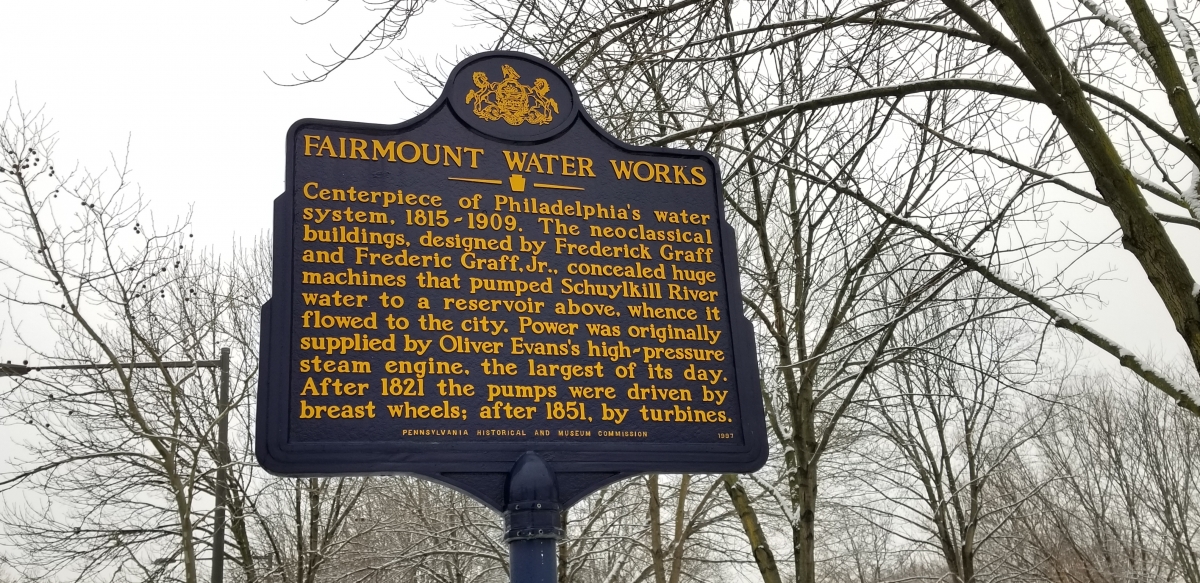
The Fairmount Water Works would be opened periodically for educational tours throughout the years, before opening a permanent educational Interpretive Center in 2003. The Fairmount Water Works educates visitors on the value of clean water and the need to for public stewardship of regional and local watersheds. Aside from tours there are also classes and other education programs. The Fairmount Water Works has become a leading repository for urban watershed research and data and a partner with the Philadelphia Water Department involved in developing green solutions to treat storm water and restore rivers and streams to be clean and healthy. Recently the Fairmount Water Works Trail and Boardwalk was also added to the site, allowing visitors to walk out over the Schuylkyl River.
Additionally, the Fairmount Water Works is used today as a unique space for events such as weddings or banquets.
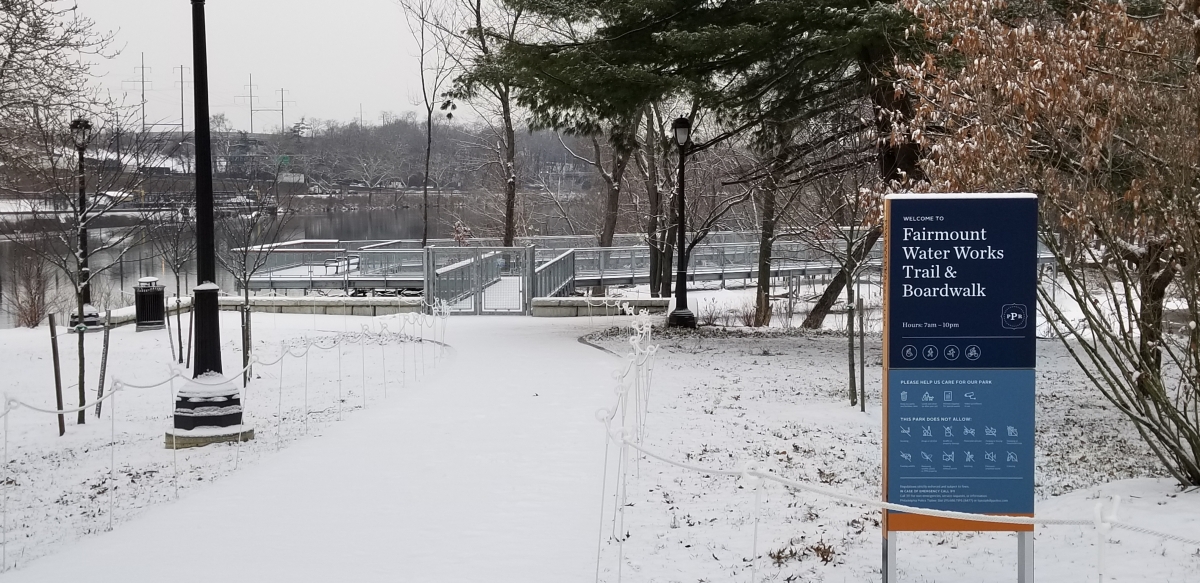
Hours
Monday: Closed
Tuesday - Saturday: 10AM – 5PM
Sunday: 1PM – 5PM
Additional Information
The Fairmount Water Works
640 Waterworks Drive
Philadelphia, PA 19130
215.685.0723
